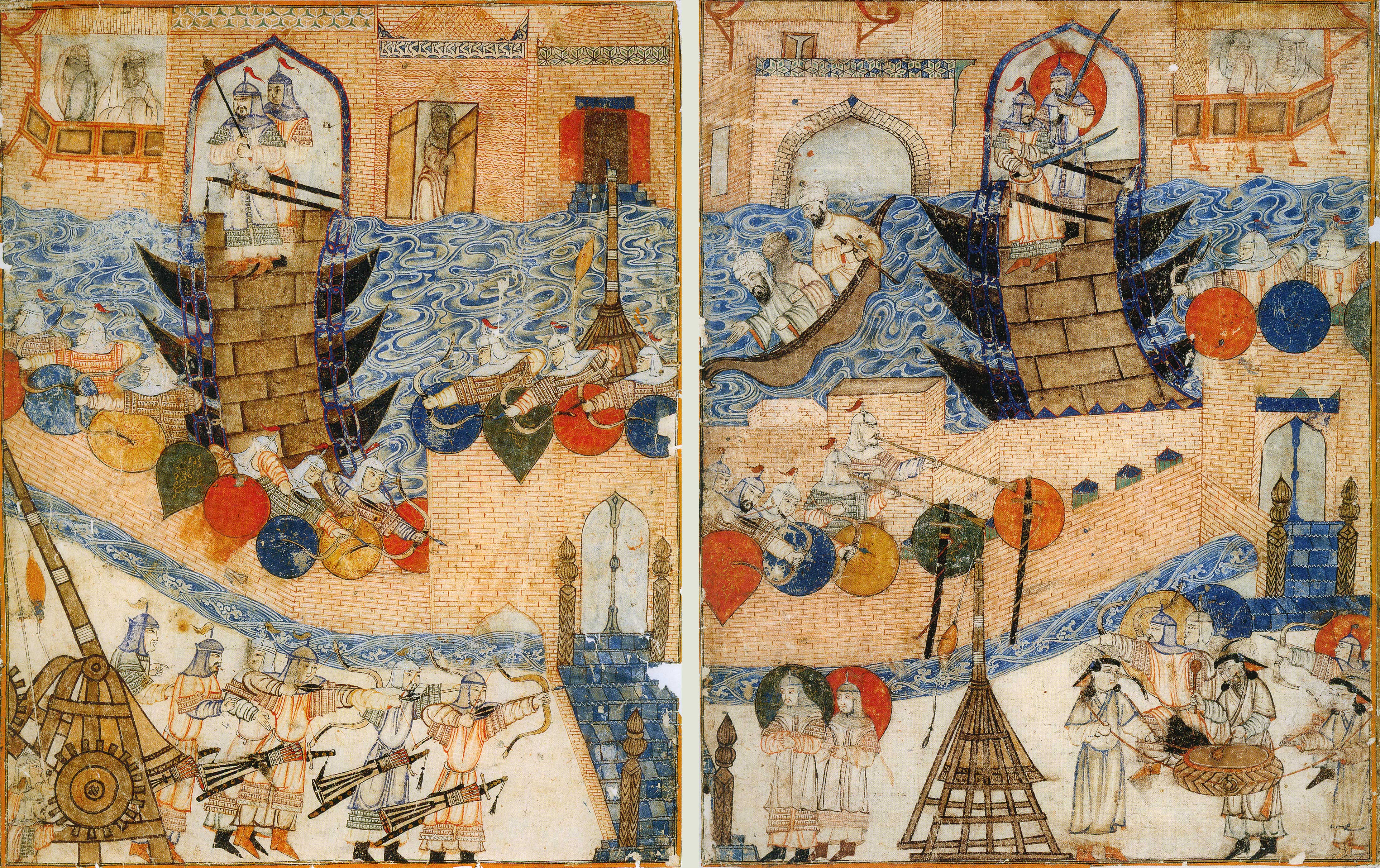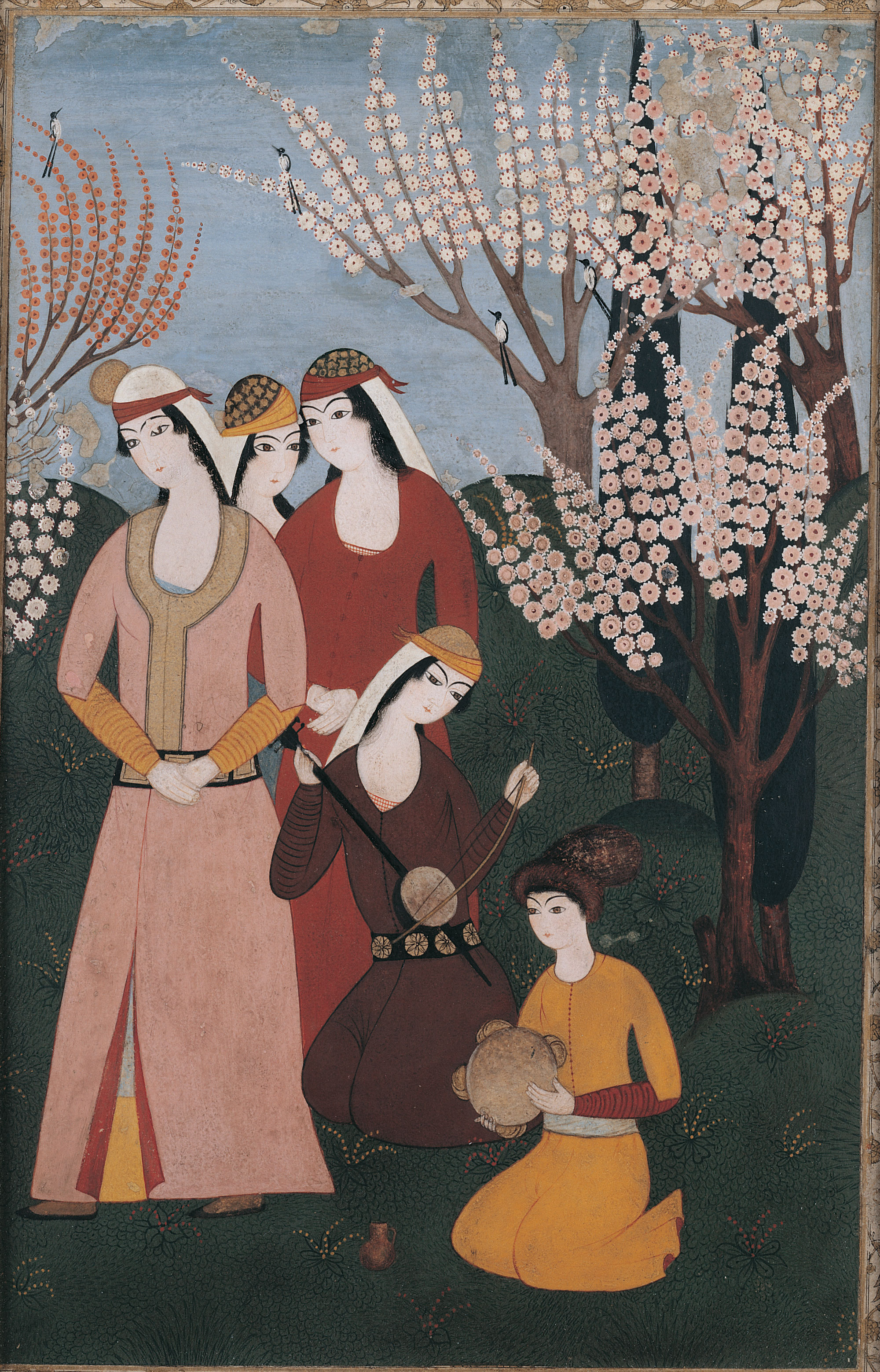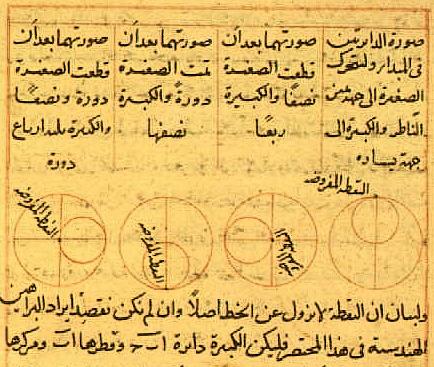|
Al-Nizamiyya Of Baghdad
Al-Nizamiyya of Baghdad ( ar, المدرسة النظامية), one of the first nezamiyehs, was established in 1065. In July 1091, Nizam al-Mulk appointed the 33-year-old Al-Ghazali as a professor of the school. Offering free education, it has been described as the "largest university of the Middle Ages, Medieval world". Ibn Tumart, founder of the Berber people, Berber Almohad dynasty, reputedly attended the school and studied under al-Ghazali. Nizam al-Mulk's son-in-law Mughatil ibn Bakri was also employed by the school. In 1096, when al-Ghazali left the nezamiyeh, it housed 3000 students. In 1116, Muhammad al-Shahrastani taught at the nezamiyeh. In the 1170s, statesman Beha Ud-Din taught at the nezamiyeh, before he moved on to teach in Mosul. The Persian poet Saadi (poet), Sa'di studied at the nezamiyeh from 1195 until 1226, when he set out on a thirty-year journey. He was also among those who witnessed first-hand accounts of its destruction by Mongol Ilkhanate invaders led by H ... [...More Info...] [...Related Items...] OR: [Wikipedia] [Google] [Baidu] |
Baghdad
Baghdad (; ar, بَغْدَاد , ) is the capital of Iraq and the second-largest city in the Arab world after Cairo. It is located on the Tigris near the ruins of the ancient city of Babylon and the Sassanid Persian capital of Ctesiphon. In 762 CE, Baghdad was chosen as the capital of the Abbasid Caliphate, and became its most notable major development project. Within a short time, the city evolved into a significant cultural, commercial, and intellectual center of the Muslim world. This, in addition to housing several key academic institutions, including the House of Wisdom, as well as a multiethnic and multi-religious environment, garnered it a worldwide reputation as the "Center of Learning". Baghdad was the largest city in the world for much of the Abbasid era during the Islamic Golden Age, peaking at a population of more than a million. The city was largely destroyed at the hands of the Mongol Empire in 1258, resulting in a decline that would linger through many c ... [...More Info...] [...Related Items...] OR: [Wikipedia] [Google] [Baidu] |
Sack Of Baghdad
The siege of Baghdad was a siege that took place in Baghdad in 1258, lasting for 13 days from January 29, 1258 until February 10, 1258. The siege, laid by Ilkhanate Mongol forces and allied troops, involved the investment, capture, and sack of Baghdad, which was the capital of the Abbasid Caliphate at that time. The Mongols were under the command of Hulagu Khan, brother of the khagan Möngke Khan, who had intended to further extend his rule into Mesopotamia but not to directly overthrow the Caliphate. Möngke, however, had instructed Hulagu to attack Baghdad if the Caliph Al-Musta'sim refused Mongol demands for his continued submission to the khagan and the payment of tribute in the form of military support for Mongol forces in Persia. Hulagu began his campaign in Persia against the strongholds of Nizari Ismailis, who lost their stronghold of Alamut. He then marched on Baghdad, demanding that Al-Musta'sim accede to the terms imposed by Möngke on the Abbasids. Although the Abba ... [...More Info...] [...Related Items...] OR: [Wikipedia] [Google] [Baidu] |
Madrasah
Madrasa (, also , ; Arabic: مدرسة , pl. , ) is the Arabic word for any type of educational institution, secular or religious (of any religion), whether for elementary instruction or higher learning. The word is variously transliterated ''Madrasah arifah'', ''medresa'', ''madrassa'', ''madraza'', ''medrese'', etc. In countries outside the Arab world, the word usually refers to a specific type of religious school or college for the study of the religion of Islam, though this may not be the only subject studied. In an architectural and historical context, the term generally refers to a particular kind of institution in the historic Muslim world which primarily taught Islamic law and jurisprudence (''fiqh''), as well as other subjects on occasion. The origin of this type of institution is widely credited to Nizam al-Mulk, a vizier under the Seljuks in the 11th century, who was responsible for building the first network of official madrasas in Iran, Mesopotamia, and Khorasan. ... [...More Info...] [...Related Items...] OR: [Wikipedia] [Google] [Baidu] |
Mustansiriya School
Mustansiriya Madrasah () was a medieval-era scholarly complex that provided a universal system of higher education. It was established in 1227 CE and was named after and built by the Abbasid Caliph Al-Mustansir (Baghdad), al-Mustansir in Baghdad, Baghdad, Iraq. The Madrasa taught many different subjects, including medicine, math, literature, grammar, philosophy, and Islamic religious studies. However, the major focus of education was Islamic law. It became the most prominent and high-ranking center for Islamic studies in all of Baghdad. Madrasas during the Abbasid Caliphate, Abbasid period were used as the predominant instrument to foster the spread of Sunni Islam, Sunni thought as well as a way to extend the founder's pious ideals. The architecture of the Madrasa was also an important example of Islamic architectural development in Baghdad. The Madrasa has experienced several periods of decline and reemergence throughout its history. The most significant degradation to the Madras ... [...More Info...] [...Related Items...] OR: [Wikipedia] [Google] [Baidu] |
Nizamiyya
The Nezamiyeh ( fa, نظامیه) or Nizamiyyah ( ar, النظامیة) are a group of institutions of higher education established by Khwaja Nizam al-Mulk in the eleventh century in Iran. The name ''nizamiyyah'' derives from his name. Founded at the beginning of the Seljuk Empire, these Sunni Islam theological schools are considered to be the model of later Islamic universities, or schools. Nizamiyyah institutes were among the first well organized institutions of higher learning in the Muslim world. The quality of education was among the highest in the Islamic world, and they were even renowned in Europe. They were supported financially, politically, and spiritually by the royal establishment and the elite class. Some scholars have suggested that the establishment of the Nizamiyya madrasas was in fact an attempt to thwart the growing influence of another group of Muslims, the Ismailis, in the region. Indeed, Nizam al-Mulk devoted a significant section in his famous ''Siyasatna ... [...More Info...] [...Related Items...] OR: [Wikipedia] [Google] [Baidu] |
Abu Ishaq Al-Shirazi
Abū Isḥāq Ibrāhīm ibn ʿAlī al-Shīrāzī ( ar, أبو إسحاق الشيرازي) was a prominent Persian Shafi'i-Ash'ari scholar, debater and the second teacher،after Ibn Sabbagh al-Shafei (ابن الصباغ), at the Nizamiyya school in Baghdad, which was built in his honour by the vizier (minister) of the Seljuk Empire Nizam al-Mulk. He acquired the status of a mujtahid in the field of fiqh and usul al-fiqh. The contemporary muhaddithun (hadith specialists) also considered him as their Imam. Likewise, he was respected and enjoyed a high status among the mutakallimun (practitioners of kalam) and Sufis. He was closely associated with the eminent Sufis of his time like Abu Nasr ibn al-Qushayri (d. 514/1120), the son of al-Qushayri (d. 465/1072). Abu Bakr al-Shashi said: "Abu Ishaq is Allah's proof on the leading scholars of the time." Al-Muwaffaq al-Hanafi said: "Abu Ishaq is the Amir al-Mu'minin (Prince of the Believers) from among the fuqaha' (jurists)." The ... [...More Info...] [...Related Items...] OR: [Wikipedia] [Google] [Baidu] |
Islamic Music
Islamic music may refer to religious music, as performed in Islamic public services or private devotions, or more generally to musical traditions of the Muslim world. The heartland of Islam is the Middle East, North Africa, the Horn of Africa, West Africa, Iran, Central Asia, and South Asia. Due to Islam being a multi-ethnic religion, the musical expression of its adherents is vastly diverse. Indigenous traditions of various part have influenced the musical styles popular among Muslims today. The word "music" in Arabic, the language of Islam, (''mūsīqā'' ) is defined more narrowly than in English or some other languages, and "its concept" was at least originally "reserved for secular art music; separate names and concepts belonged to folk songs and to religious chants".) At least one scholar (Jacob M. Landau) makes the generalization about Islamic music that it "is characterized by a highly subtle organization of melody and rhythm", that "the vocal component predominates over ... [...More Info...] [...Related Items...] OR: [Wikipedia] [Google] [Baidu] |
Science In The Medieval Islamic World
Science in the medieval Islamic world was the science developed and practised during the Islamic Golden Age under the Umayyads of Córdoba, the Abbadids of Seville, the Samanids, the Ziyarids, the Buyids in Persia, the Abbasid Caliphate and beyond, spanning the period roughly between 786 and 1258. Islamic scientific achievements encompassed a wide range of subject areas, especially astronomy, mathematics, and medicine. Other subjects of scientific inquiry included alchemy and chemistry, botany and agronomy, geography and cartography, ophthalmology, pharmacology, physics, and zoology. Medieval Islamic science had practical purposes as well as the goal of understanding. For example, astronomy was useful for determining the ''Qibla'', the direction in which to pray, botany had practical application in agriculture, as in the works of Ibn Bassal and Ibn al-'Awwam, and geography enabled Abu Zayd al-Balkhi to make accurate maps. Islamic mathematicians such as Al-Khwarizmi, Avicen ... [...More Info...] [...Related Items...] OR: [Wikipedia] [Google] [Baidu] |
Mathematics In Medieval Islam
Mathematics during the Golden Age of Islam, especially during the 9th and 10th centuries, was built on Greek mathematics (Euclid, Archimedes, Apollonius of Perga, Apollonius) and Indian mathematics (Aryabhata, Brahmagupta). Important progress was made, such as full development of the decimal place-value system to include decimal fractions, the first systematised study of algebra, and advances in geometry and trigonometry. Arabic works played an important role in the transmission of mathematics to Europe during the 10th—12th centuries. Concepts Algebra The study of algebra, the name of which is derived from the Arabic language, Arabic word meaning completion or "reunion of broken parts", flourished during the Islamic golden age. Muhammad ibn Musa al-Khwarizmi, a Persian scholar in the House of Wisdom in Baghdad was the founder of algebra, is along with the Greek people, Greek mathematician Diophantus, known as the father of algebra. In his book ''The Compendious Book on ... [...More Info...] [...Related Items...] OR: [Wikipedia] [Google] [Baidu] |
Historiography Of Early Islam
The historiography of early Islam is the scholarly literature on the early history of Islam during the 7th century, from Muhammad's first revelations in 610 until the disintegration of the Rashidun Caliphate in 661, and arguably throughout the 8th century and the duration of the Umayyad Caliphate, terminating in the incipient Islamic Golden Age around the beginning of the 9th century. Primary sources 7th-century Islamic sources * Between c. 568 and 645 Birmingham Quran manuscript * Radiocarbon dated between c. 649 and 675 (though written in the post-8th century Kufic scriptTübingen fragment* Between c. 578 and 669 Sanaa manuscript * 692 – Qur'anic Mosaic on the Dome of the Rock. * The Book of Sulaym ibn Qays, attributed to Sulaym ibn Qays (death 694–714). The work is an early Shia hadith collection, and it is often recognised as the earliest such collection. There is a manuscript of the work dating to the 10th century. Some Shia scholars are dubious about the authent ... [...More Info...] [...Related Items...] OR: [Wikipedia] [Google] [Baidu] |
Arabic Numerals
Arabic numerals are the ten numerical digits: , , , , , , , , and . They are the most commonly used symbols to write Decimal, decimal numbers. They are also used for writing numbers in other systems such as octal, and for writing identifiers such as computer symbols, trademarks, or license plates. The term often implies a decimal number, in particular when contrasted with Roman numerals. They are also called Western Arabic numerals, Ghubār numerals, Hindu-Arabic numerals, Western digits, Latin digits, or European digits. The ''Oxford English Dictionary'' differentiates them with the fully capitalized ''Arabic Numerals'' to refer to the Eastern Arabic numerals, Eastern digits. The term numbers or numerals or digits often implies only these symbols, however this can only be inferred from context. It was in the Algerian city of Béjaïa that the Italian people, Italian scholar Fibonacci first encountered the numerals; his work was crucial in making them known throughout Europe. ... [...More Info...] [...Related Items...] OR: [Wikipedia] [Google] [Baidu] |
Arabic Literature
Arabic literature ( ar, الأدب العربي / ALA-LC: ''al-Adab al-‘Arabī'') is the writing, both as prose and poetry, produced by writers in the Arabic language. The Arabic word used for literature is '' Adab'', which is derived from a meaning of etiquette, and which implies politeness, culture and enrichment. Arabic literature emerged in the 5th century with only fragments of the written language appearing before then. The Qur'an, widely regarded as the finest piece of literature in the Arabic language, would have the greatest lasting effect on Arab culture and its literature. Arabic literature flourished during the Islamic Golden Age, but has remained vibrant to the present day, with poets and prose-writers across the Arab world, as well as in the Arab diaspora, achieving increasing success. History ''Jahili'' is the literature of the pre-Islamic period referred to as ''al-Jahiliyyah'', or "the time of ignorance". In pre-Islamic Arabia, markets such ... [...More Info...] [...Related Items...] OR: [Wikipedia] [Google] [Baidu] |







